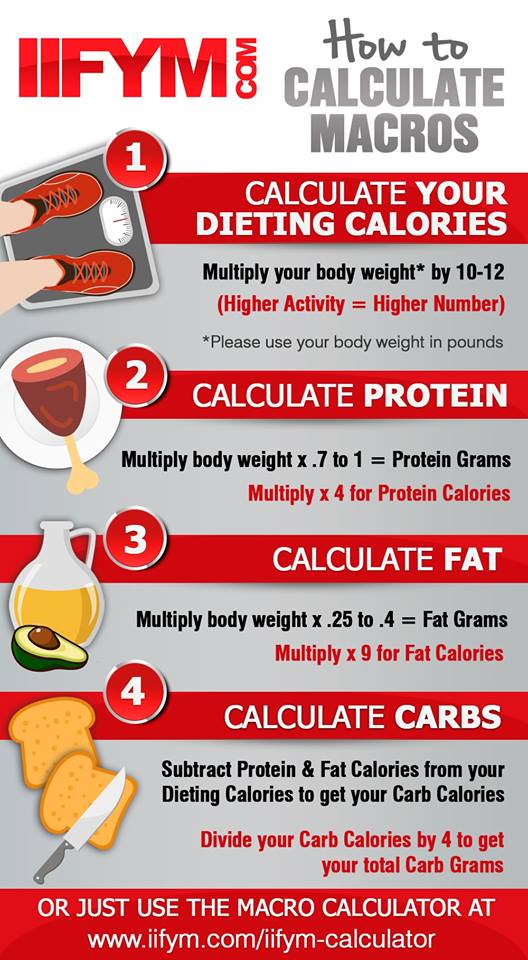

Because your body loves to use carbs for energy, excess carbs are stored as body fat in case your body needs more energy later. Glucose is just a fancy name for blood sugar and is the driving force between a number of processes in your body.įor every gram of carbs you eat, you’ll get 4 calories. When you eat carbs – think: veggies, fruits, starches, whole grains, sugar – your body breaks them down into glucose. CarbsĬarbs are the body’s preferred source of energy. The main thing to know, though, is that there are three different macronutrients – carbs, protein, and fat – and your body uses each one differently. Like we mentioned in last month’s post, there’s a lot to understanding macros. You’re not going to get the same results eating an all-pizza diet while counting calories as you are if you eat a well-balanced diet and pay attention to your macros. However, those calories can’t just come from anywhere. And yes, if your goal is to build muscle or gain weight, you need to eat more calories than you’re burning. Yes, if your goal is to lose weight, you do need to burn more calories than you’re eating (or drinking). This is why a healthy diet and plenty of exercise continues to be the prescribed plan for safe, sustainable weight loss. While fad diets come and go, the one thing everyone eventually comes back to is the idea that if you want to lose weight you need to eat fewer calories than you’re burning. Of course, this number varies from person to person and depends on a number of factors like overall health, heart rate, blood pressure, and body composition (amount of fat versus lean muscle mass).ĭepending on your activity level and fitness goals, you’ll either add calories to or subtract calories from your TDEE to figure out exactly how many calories you should be eating each day.

With your TDEE, you now have an estimate of how many calories your body burns each day. Other activity levels should adjust their BMR as follows: According to the Harris Benedict Formula, a person who lives a sedentary lifestyle (like working a desk job and doing little to no daily exercise) should multiply their BMR by 1.2 to get the TDEE. To figure out your TDEE, we recommend using the Harris Benedict Formula – a simple but widely accepted formula dating back to 1919. In that case, we’ll need to know our total daily energy expenditure (TDEE). However, most of us do more than sit in front of the big glowing box in our living rooms all day long. This means that even if you spent the entire day enjoying a Netflix binge sesh sitting on the couch and not lifting so much as a finger to text your friends about how awesome Season 2 of Stranger Things is, you’ll still burn calories – and that number will be your BMR.Ĭalculating your BMR based on your height, weight, gender, and age will tell you the minimum number of calories your body uses for energy each day. The bare minimum number of calories that your body needs to function each day is called your basal metabolic rate (BMR). From that super scrumptuous steak to that light bite of celery and ranch dressing, everything contains calories.Įating a calorie means you’re giving your body one unit of energy to put to use somewhere in your body.ĭepending on your age, height, weight, activity level, and overall health, your body needs a certain number of calories to carry out its day to day processes. When you eat anything, it contains calories. Just like we in the United States use inches to measure lines on paper, miles to measure roads, and pounds to measure weight, calories are a way of measuring energy.

People talk about “calories this” and “calories that” all the time – but what is a calorie?Ī calorie is simply a unit of measurement for energy. Here’s the run down on calories, macros, and which one deserves your utmost attention while you’re working your way to that dream bod. The answer may be simpler than you think (jump to it). Everyone’s body is unique and it takes a great deal of knowledge and a fair bit of experimentation to find out what’s going to get you to your goals.Īlong the way, many people find themselves hitting this brick wall: do I count macros or calories? Changing your body composition is tricky business.


 0 kommentar(er)
0 kommentar(er)
